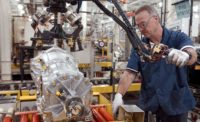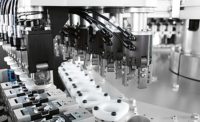The benefits of collaboration cannot be overstated. We have developed and managed products and projects with team members around the globe. Our numerous patents were initiated through many physical, often impromptu, interactions. In times of complex design or requirements objectives, I would go outside with the rest of the team and chat about our difficulties. Invariably, ideas would get generated. We would capture those ideas, and these resulted in intellectual property.
I worry that we are missing out on the benefits of such impromptu meetings in this post-COVID world. Many people successfully worked from home during the pandemic, and now they are reluctant to go back to the office. Indeed, I recently spoke with a headhunter who complained that it’s becoming increasingly difficult to find people who will go into an office. Many tools help communication in a remote team, but they will never replace impromptu interactions.
There are many tools for product and process development. These tools enable us to explore many design alternatives. That’s a good thing. From experience, opting for the first solution, to the exclusion of other seemingly lesser options, often results in future constraints. The following tools and processes will help you quickly explore alternatives with lower cost.
Artificial intelligence (AI) can help product development and manufacturing effort. For example, we have used AI to explore alternative materials and equipment options. This is not to suggest that you can merely punch in some questions in an ad-hoc way and—bang!—out comes an answer. But, AI can help you explore possibilities quickly.
Simulations can help determine the appropriate equipment, floor space, initial throughput, and material movement estimates.
Risk analysis identifies and quantifies the likelihood of a product failure. Risk analysis is an essential component of failure mode and effects analysis (FMEA), as well as design for manufacturing and assembly. It identifies risks early, before series production, to avoid significant impact on long-term production volume. Companies that have successfully implemented risk analysis in their development cycle have reported substantial benefits to customer satisfaction and reduced R&D expenses.
There are many tools for product and process development.
Design for manufacture and assembly is a methodology that aims to design products that can be made with minimal time, effort and cost. For instance, methods can be employed to encourage design simplification and to assess how easy product will be to make. This may result in fewer modules, resulting in lower material costs and quicker assembly. One prominent method employs quantitative scores depending on the number and type of components.
Virtual and augmented reality can play a role with this methodology long before manufacturing lines or cell components are produced. The upshot of this is that learning happens earlier, and setting up the assembly line takes less time. Virtual reality can help the manufacturing team identify specific equipment and equipment interactions with workers. In addition, virtual reality is a quick and inexpensive way to evaluate alternatives.
Configuration management plays an instrumental role in product development and maturation. A similar methodology can be applied to the manufacturing process. This system will need to go beyond the initial launch of the manufacturing line, and be connected to our continuous improvement efforts.
Physical and functional configuration management are the two fundamental categories. The conformity of the product to its defining documents is evaluated through physical verification. Functional verification determines the compliance of a product with all specified requirements. Depending on the requirements of the program or the client, physical and functional attributes may be required to manage the development of the product effectively. This will result in incremental tests or inspections.
Configuration management is used to manage the product’s technical direction. CM provides a roadmap in the development of the product and what physical and functional attributes are next in the product. It also explains how the product has made it to this specific point. Surveillance audits identify and record a product’s functional and physical characteristics; control changes to those characteristics; record and report change processing and implementation status; and verify compliance with specific requirements.



